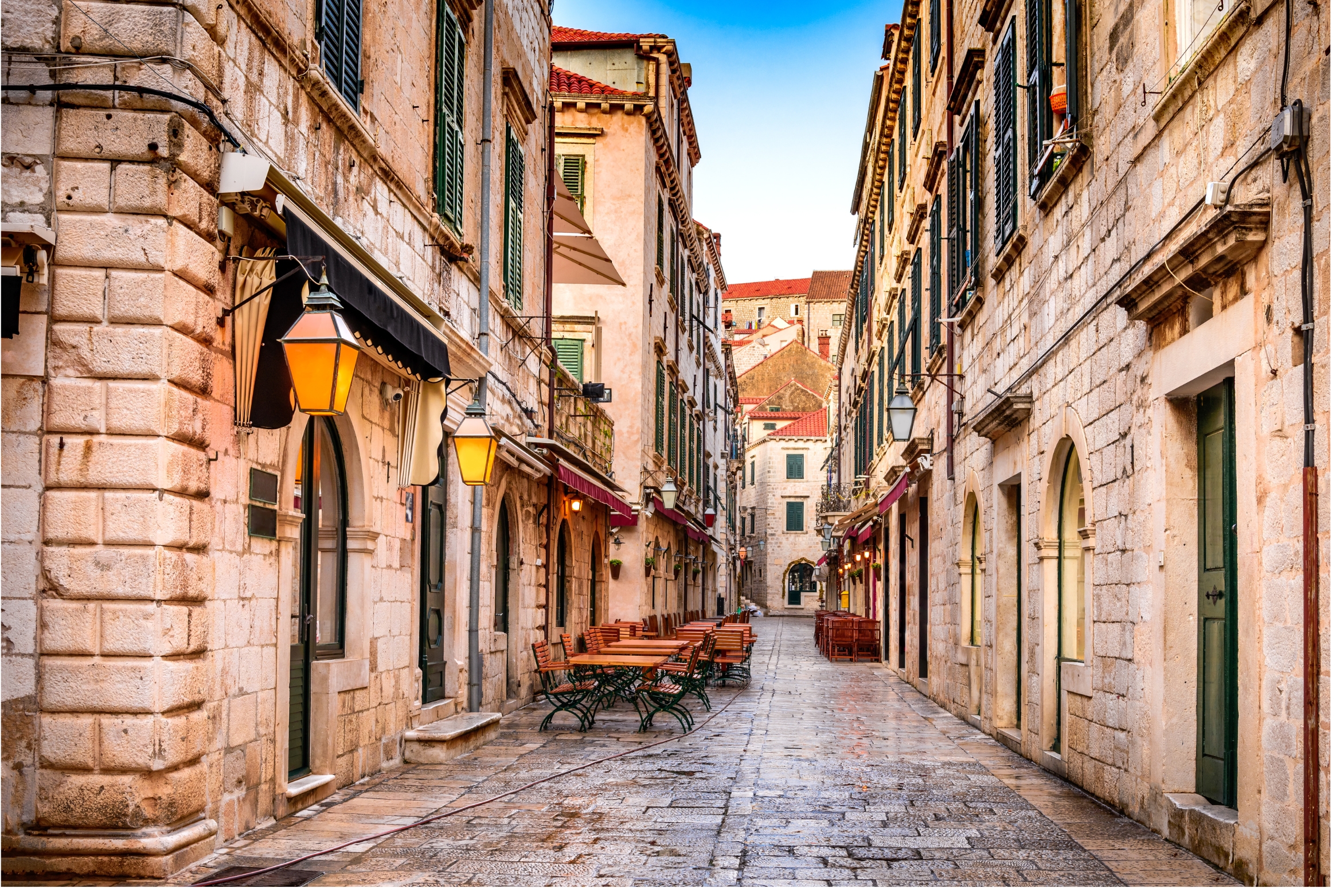INTRODUCTION
The idea of seeking out destinations during the time of year when they have the lowest number of visitors hasn’t fully caught on in tourism’s mainstream.
But that’s changing. As more and more travelers prioritize meaningful, sustainable, and authentic experiences, low season travel is gaining traction.
And with good reason. There are a host of benefits, for you as a traveler, for the destinations, and for the local community, to visiting places when they’re not overwhelmed with crowds.
In this Q&A, we chat with Ged Brown, founder of Low Season Traveller, to find out what’s so different about visiting destinations outside of their peak season, and why low season travel deserves its day in the sun.
Whether you’re a seasoned explorer or simply looking to avoid the crowds on your next vacation: If you haven’t tried low season travel, this conversation will open your eyes to its potential.
Thank you to Ged for sharing his expertise.
WHY LOW SEASON TRAVEL IS THE TOURISM INDUSTRY’S BEST-KEPT SECRET
– Q & A WITH GED BROWN OF LOW SEASON TRAVELLER
Note: The following responses have been edited for brevity while preserving their original intent.
1. LOW SEASON, OFF-PEAK, AND SHOULDER SEASON TRAVEL
First question: Can you explain the nuances between low season vs. off-peak vs. shoulder season travel?
When I set up Low Season Traveller, it was all about what has generally been known as the off-season. I define it as the time of the year when there are the least number of visitors present.
But “off-season” sounds negative. It sounds like something that’s gone off, it’s gone bad. I travel during the off-season all the time, and I prefer it. I find it’s a better experience than the peak season.
If you’re talking, for example, about Mediterranean Europe, the absolute peak season revolves around June, July, August, and September. The rest, for the most part, I call the low season: broadly speaking, it includes the off-season and the shoulder season.
I’ve used the Mediterranean as an example, but it’s important to be clear that in other destinations, their peak seasons and low seasons may happen at other times of the year. Even within Europe, there are destinations which have their low season months in July and August.
2. ONCE THE SECRET’S OUT, COULD THE LOW SEASON EXPERIENCE SOMEDAY COMMAND A PREMIUM?
I’ve had a few conversations recently with people, and the way tourism is going, I can see the low seasons eventually commanding higher prices. Because nine times out of 10, it’s a better experience than the peak season.
When I was setting up Low Season Traveller, I did a pitch deck with a long weekend in Rome as an example, to show people what I meant.
I compared two weekends. It was the exact same itinerary: three nights, with EasyJet flights from Manchester. I think it included a five-star hotel, and hop-on, hop-off bus. But the difference was that one weekend was at the end of July/beginning of August, and one was in early December.
The one in December was less than half the price. Half the price on the flights, half the price on the hotel.
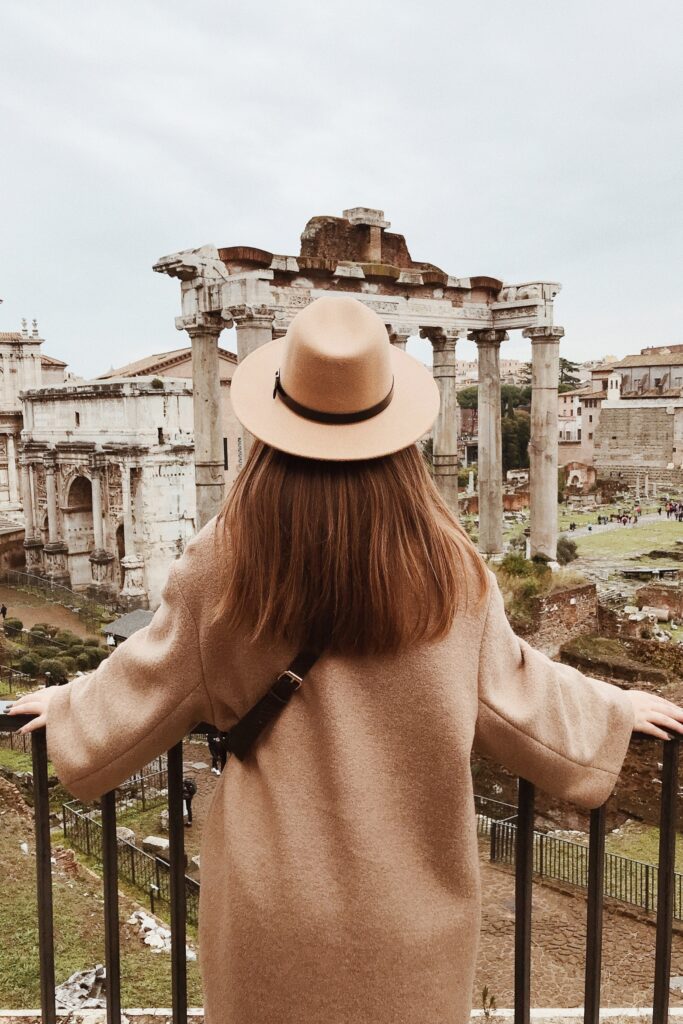
But the fact that it’s cheaper is only part of the story. Because all of the attractions will be the same. You’re still going to see the Coliseum. You’re still going to see St. Peter’s square.
But during the peak season, you’re likely to queue three hours for the Coliseum. And then you’ll be among throngs of other people.
Whereas in December, you’re not going to have any queues. You’re not going to struggle to get a reservation at restaurants. The only difference that I could see is you might need to bring a jacket in December.
My question then is, why are you traveling to Rome? Are you traveling because you want the most perfect weather? Or are you traveling because of the culture, the heritage, to engage with the local people, to eat the food?
Because unless the weather’s your main priority, it’s way better to go in December. Why wouldn’t you?
And also, when does Rome need the economic lift of tourism more? I would argue it needs visitors far more in December than it does in the middle of the peak season, when it’s crowded.
3. KEY BENEFITS FOR TRAVELERS
What are some of the other benefits travelers can have with low season travel? Especially for those seeking more responsible tourism experiences?
I think traveling in the low season is a more responsible approach to tourism. Knowing that you’re not contributing to overtourism in destinations around the world.
Destinations do not need you during their peak months, they really don’t. They’ve got more than enough to handle.
But in a lot of destinations, for approximately six months of the year, they’re empty. The economic impact of tourism pretty much dries up. So by traveling during the low season months, you’re providing an economic lift to these places when they actually need it.
And it’s not just the hotels and airlines. It’s about the small businesses. It’s about the cafes, the food stores, the taxis. That’s when they need the lift from tourism.
Also, if there’s fewer tourists around, usually you’ve got a better chance to engage with the local population, because they’ve got time for you.
4. THE MAGIC OF LOW SEASON TRAVEL
I’ll give an example of that. A couple of years ago, I was in Rhodes during the low season. It was the beginning of April, and we were wandering around the Old Town. Rhodes’ Old Town is a UNESCO-protected walled town, and it’s breathtakingly beautiful.
It’s also utterly thronged in the summer. And Rhodes in summer is red hot, it’s really a blistering hot time to be walking around.
But again, this was early April, so it was absolutely deserted, about 20°C [68°F], sun shining. There were still cafes and such open, and it was easy to get a seat outside at a nice table.
I wandered past a shop, and a local craftsman was working with leather goods. He was a shoemaker. He was outside doing his work on his bench.
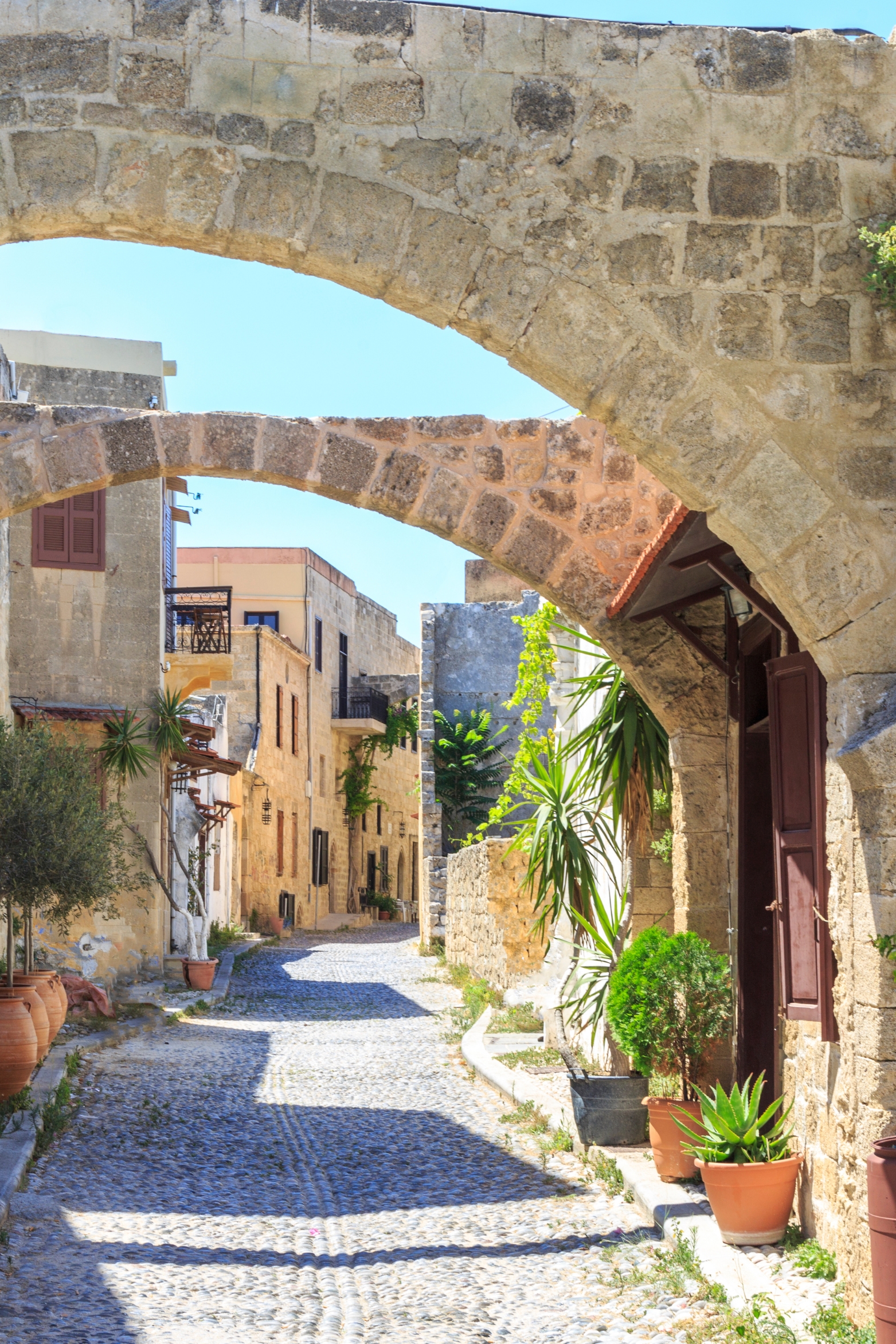
I stopped, and said, “How are you doing?”
He said, “Hello, my name is Stavros. I’ve been here for generations.” He told me his story: his father was a cobbler, his grandfather was a cobbler, and he had all the time in the world to speak with me.
And he told me, “During the tourist season, I wouldn’t have had time to speak with you because I’m just too busy.” He said, “It’s lovely to actually have time to chat with you, to learn what you think of our island.”
And then at one point he said, “Do you like music?”
I said, “Yeah, I love music.”
He asked me, “Have you ever heard the traditional Greek bouzouki?”
I hadn’t. So he ran around the back, and came out bringing this big bouzouki, and he started playing Zorba the Greek.
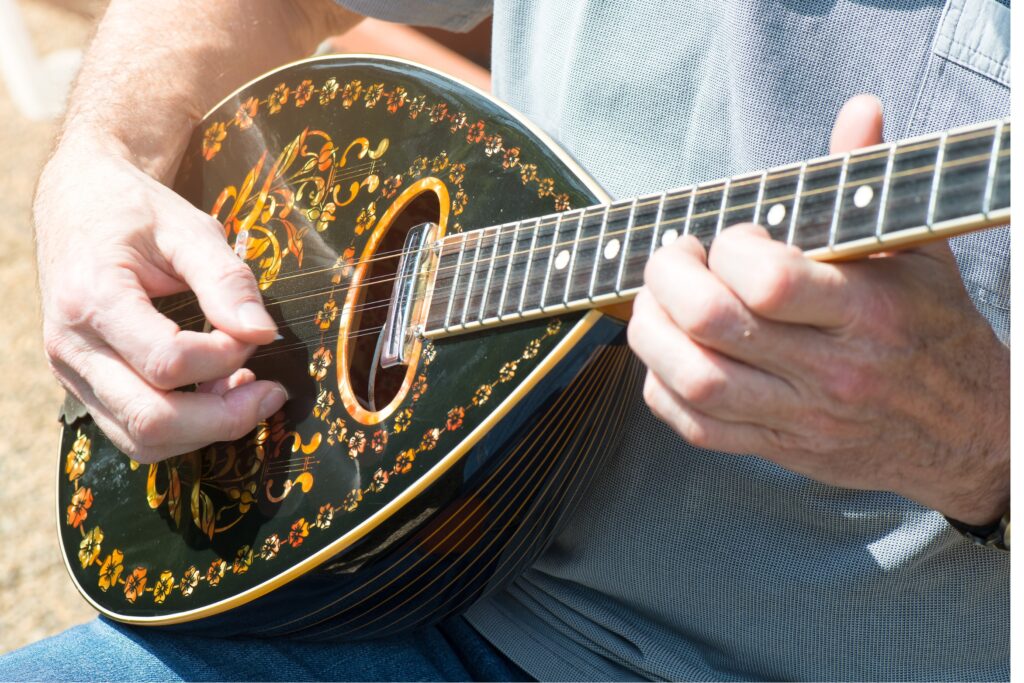
That kind of interaction would not be possible in the peak season months.
That’s just one example of why I say the magic happens in the low season. And that’s why I always want to travel during the low season. To find the magic.
5. MISCONCEPTIONS ABOUT LOW SEASON TRAVEL
There are people who don’t see it that way, or perhaps have some misconceptions about the low season.
So that brings me to the next question: Have you seen any misconceptions about low season travel that you’d like to address here, or found that some people have reservations or hesitations about traveling during the low season?
There’s a huge number of misconceptions about low seasons, and I’ve encountered a lot of them in the time since I started Low Season Traveller.
Misconception #1: The Weather
One of my favorites to debunk is, “The weather’s crap. Who wants to visit a place when the weather’s crap?”
To which I reply, “Are you traveling solely for perfect weather? If that’s the most pressing concern for you, I recommend you go to Dubai every year, any time of the year. You’ll get perfect weather all the time. Or Tenerife by the way, is also pleasant all year round.
“But if your main reason for travel is to get under the skin of a destination, to learn how it ticks, to meet the local people, to understand the culture and the history of the destination, and to delve a little bit deeper, then what you’re saying is that the weather isn’t the main factor.”
Now, when we talk about the weather, it varies according to destination. In the tropics, parts of Thailand, Malaysia, Vietnam, Laos, low season typically coincides with their rainy season.
But it doesn’t rain all the time in the tropics. That’s a misconception. I think a lot of travelers look at an annual rainfall chart, and they see how high those bars are during the rainy season and think, “Ugh, it’s going to be raining all the time.”
It doesn’t. It will rain, but it’s tropical rain. I live in Manchester, and it’s nothing like the rain we get here.
First of all, it’s warm, which is kind of nice. Secondly, you’re usually ready for it. And third, everywhere looks more lush. It looks more green. There’s something magical about that time of the year, and it’s a different experience to what you get during the dry time of year.

I would like people to know that it’s going to rain for two, maybe three hours, and then it dries out pretty quickly because of the heat.
Then you crack on with whatever you want to see. It’s not that big a deal.
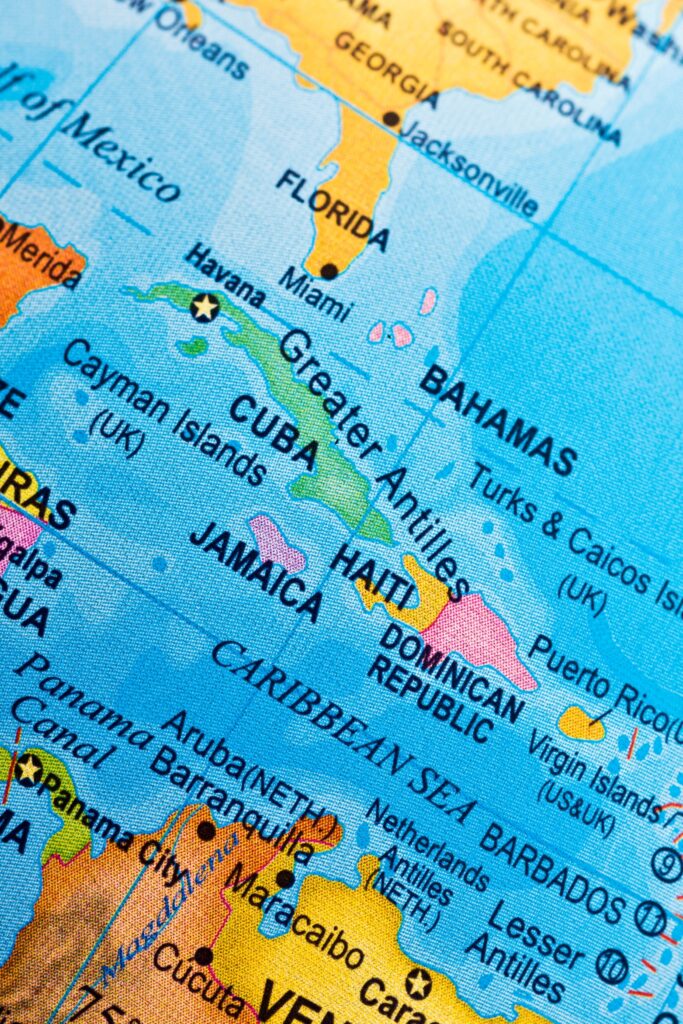
Misconception #2: Hurricane Season in the Caribbean
Another misconception is that the summer is not a good time to go to the Caribbean because of the hurricane season.
The Caribbean covers an area roughly the size of Western Europe. And people don’t think of that. They don’t realize the Caribbean is a huge area, so hurricane season affects certain islands more than others. There are a number of islands which go relatively unscathed.
There’s a risk element there, and you need to do your research. But if you take, for example, the island of Barbados, it’s outside of the main hurricane belt, rarely touched by hurricanes. It does have rainfall during the summer, but it rains for like two hours. Then it stops, the sun’s out for the rest of the day, and it’s glorious.
Misconception #3: Europe’s too Cold
Conversely, with some destinations around Europe, people worry that low season is too cold. But for me, low season travel is not for fair weather travelers. We are the antithesis of a fair weather traveler.
We’re not traveling for the most perfect weather. We’re traveling because we want to get under the skin of the destination. The weather is whatever it is.
Finally, there’s that famous quote: “There’s no such thing as bad weather. They’re just being badly prepared for the weather.”
And it’s true. As long as you’re prepared, you’ll often find the weather is fine.
But it’s also a misconception that the weather is always less enjoyable during the low season. Because taking your example of Rhodes in April: If you’re comparing the weather when it’s hot as blazes in summer, versus April when it’s 20°C, I actually would prefer the weather in April.
So even in terms of weather, it’s not always a sacrifice to travel during the low season. You can actually have better weather as well.
Absolutely.
Climate Change in Europe
And the other thing when we’re talking about the weather, you can’t not mention climate change. If you look right here on our doorstep in Europe, Southern Europe is getting hotter and hotter, in July and August in particular.
That’s having effects like forest fires and wildfires becoming a big issue, because the temperatures in parts of Greece, Cyprus, and Turkey are reaching the mid- to high-40s [°C; roughly 110°F-115°F] in the summer.

That’s life threatening territory.
And we’ve already seen evidence that people are starting to look more at traveling during the shoulder periods for those destinations, because it’s just more comfortable.
So climate change is going to start affecting travel around the world, when travelers consider the weather side of things.
Misconception #4: Families and Low Season Travel
Another misconception has to do with family travel. When I set up Low Season Traveller, people said to me: “So you don’t cater to people with kids?”
I asked, “What do you mean by that?”
They said, “Well, as parents, we’re tied to school holidays.”
My initial reaction was “I guess low season travelers can be under 33, before they’re starting a family, and over 45, when the kids start to leave home and go to uni.” And that’s a huge market, the over-45s and the under-30s.
However, as I started to research the low seasons of destinations around the world, I realized that every single month in the year, including July and August, has low season destinations, and they’re all different.

So if you take Europe: Madrid and Seville have the lowest number of international visitors during the months of July and August. Same in Brussels.

These tend to be more business-oriented cities, so a lot of the visitors come for work. In the summer, everyone goes off on holiday, so they all leave the city.
Also in the likes of Seville and Madrid, it’s very, very hot in the summer. But no more so than in Mallorca or such. So it can still be a great low season experience.
For other destinations like Barbados in the Caribbean, low season is during our summer. The Maldives, Sri Lanka: low season, our summer months. Mauritius: low season, our summer months. The list goes on and on.
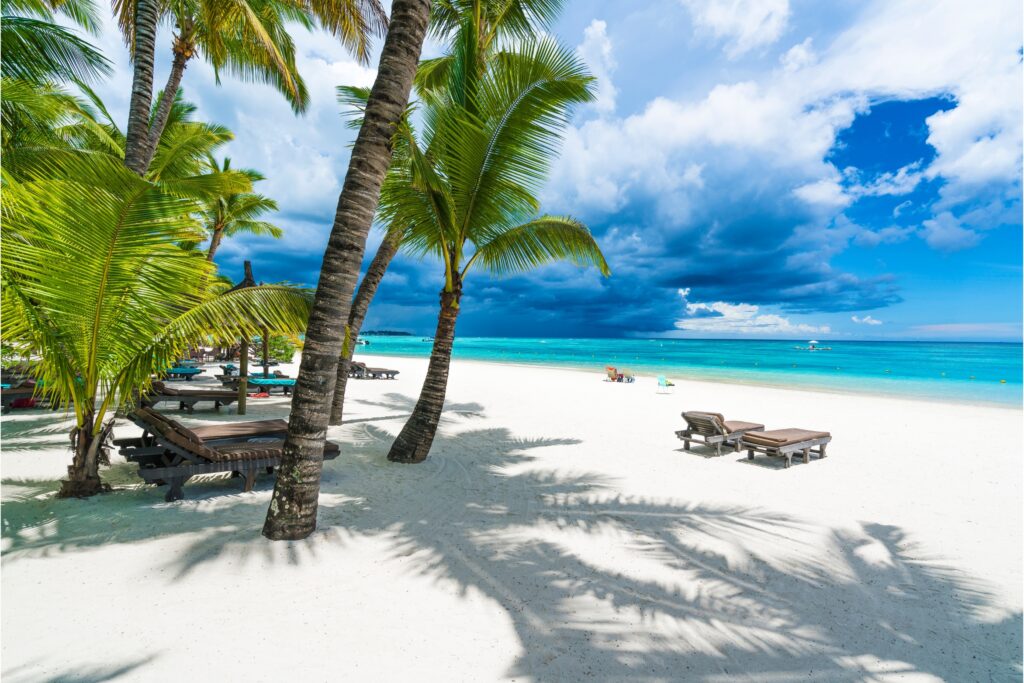
So it’s a misconception that you can’t find a low season deal during the summer holidays when the kids are off. You really can. But you need to research it, and to understand what’s out there.
6. CAVEATS TO LOW SEASON TRAVEL: WHAT TRAVELERS SHOULD KNOW
Are there any caveats to low season travel that people should keep in mind?
You need to have your wits about you. For example, we talked about hurricane season before. When you’re looking at parts of the Caribbean that do tend to be more affected by hurricanes, you need to be aware of that, you need to do your research.
And there are parts of Nepal when in the low season, not only is it wet, but the roads can subside, there can be real issues with that.
So I think with any low season in terms of weather, you need to do your research and make sure it’s safe, first and foremost. You need to do your due diligence.

The only other downside is that some destinations shut down completely during the winter.
Until very recently, Dubrovnik was thronged in the summer, but in the winter, it pretty much closed.
You could still walk around the Old Town of Dubrovnik, which is beautiful. And the weather’s perfect, it’s mild, really lovely. But in parts of Dubrovnik, you couldn’t even get a cup of coffee, let alone a meal.
That’s starting to change. They’re trying to encourage the local businesses to remain open for longer periods.
But again, you have to do your research and make sure: is stuff going to be open when you get there, or are options going to be very limited?
7. DUBROVNIK OR DUBLIN IN FEBRUARY? DON’T KNOCK IT ‘TIL YOU TRY IT
In a way, it’s about setting expectations. I always say, one thing about low season travel is: If your expectations aren’t high, they’re likely to be surpassed.
So for example, if you go to Dubrovnik in February, you’re paying a fraction of what you would pay in peak season for your accommodation and your flights. Your expectations are probably low because you’re thinking, “It’s not the best time of the year to visit. I’ve chosen this time because it’s a good deal.”
Chances are you’re going to leave feeling like all of your expectations were surpassed. Because your expectations were so low, you’re surprised to see, “Wow, actually, it was amazing.”
And when that happens, it encourages people to say, “I’m going to be a low season traveler from now on.”
It’s like that business idea of ‘underpromise, overdeliver.’
100%. I’ve traveled so many places around the world during the low season months, and every time, for the most part, I’ve gotten outrageously lucky.
I was in Nuremberg in January, and I didn’t see a cloud in the sky for three days. It was definitely cold, but it was just amazing. I couldn’t believe it. My photographs were beautiful.

I went to Dublin in February for a long weekend. Lowest of the low season. The weather should have been awful. But again, there was generally not a cloud in the sky for three days. Cold, but not a cloud in the sky.
The feeling that I had was “I lucked out big time”. Because I could go to Nuremberg or Dublin in the summer, and not even see the sunshine.
So you can get lucky. When you get lucky and you’ve paid half the price of what anybody in the summer is paying, you just feel like a winner. And you feel like you’ve done the right thing as well.
Sometimes low season travel can be a roll of the dice, but when the dice come in, you feel like you have absolutely nailed it.
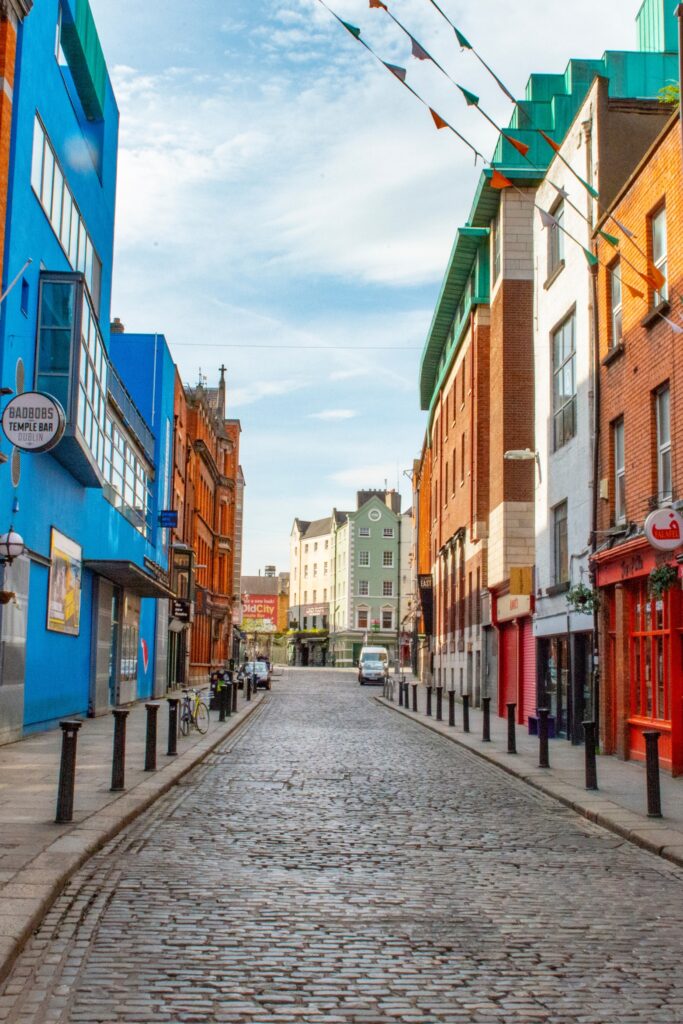
8. HOW LOW SEASON TRAVEL SUPPORTS DESTINATIONS
You mentioned that “you feel like you’ve done the right thing” when you travel during the low season. That’s a good segue into how low season travel benefits the destination, especially popular tourist destinations.
First of all, it’s about spreading the economic impact throughout the year.
Don’t forget, most of tourism is small businesses. And they’re trying to operate knowing that they’ve only got a short window where they can make any money.
The tourism industry is currently set up so that most destinations get 80% of their revenues and visitation during five or six months of the year. The rest of the year, who knows?
So how can they plan when they don’t know what their income is going to be for the majority of the year? It’s really hard. That’s a risky game. Because if something goes wrong during those peak six months, they’re sunk. And it’s the whole economy that gets sunk.
What happens if something like COVID hits? We got the answer to that in 2020 and 2021. Southern Europe lost its peak season. No guarantee of income.
So a smart approach is to spread tourism out more evenly throughout the year.
Also, it’s better from an environmental resource point of view. I’m talking about air quality, access to fresh water, those kind of things. It makes a lot more sense to have the demands on these resources more evenly spread throughout the year.
That tends to be better for the local population as well. So I think overall, it’s about spreading out the negative impact of tourism to ease the pressure.
9. IF YOU THINK OVETOURISM IS A PROBLEM NOW…
Another thing: In the next 15 to 20 years, global tourism is going to double. That’s absolutely true. It’s coming from sources like the World Economic Forum, the World Travel and Tourism Council, UN Tourism. Boeing and Airbus, by the way, also say the same thing.
To put that number in perspective: 2019 saw 1.5 billion international visitor arrivals. And to reach that number took 100 years. It took from the early 1900s to build tourism up to 1.5 billion international arrivals.
Within the next 20 years, that number is going to double.
That should scare the bejesus out of everybody. Because if you think that what we saw in terms of overtourism in 2019 was bad, it is nothing compared to the tsunami of tourism which is on its way in the next 20 years.
That’s another reason why we need to get tourism spread throughout the year.
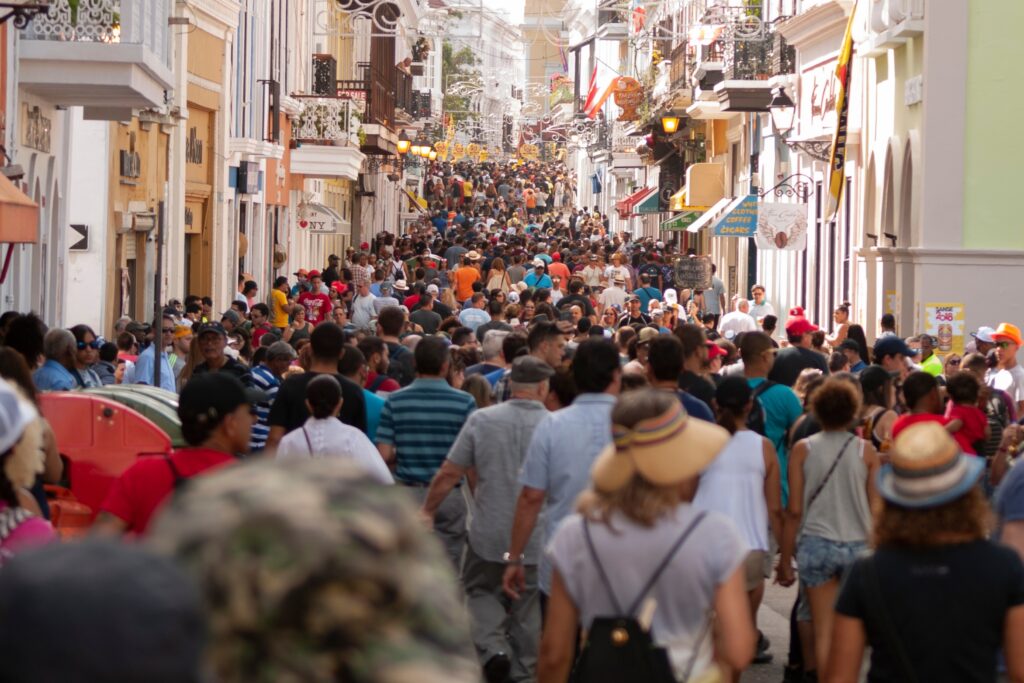
10. THE TIN OF BEANS ANALOGY: HOTELS, SEASONALITY AND SUSTAINABLITY
And also, talking about the environment, the ‘built environment’ accounts for between 30% and 40% of all global greenhouse gas emissions. In other words, building stuff accounts for roughly a third of global greenhouse gas emissions.
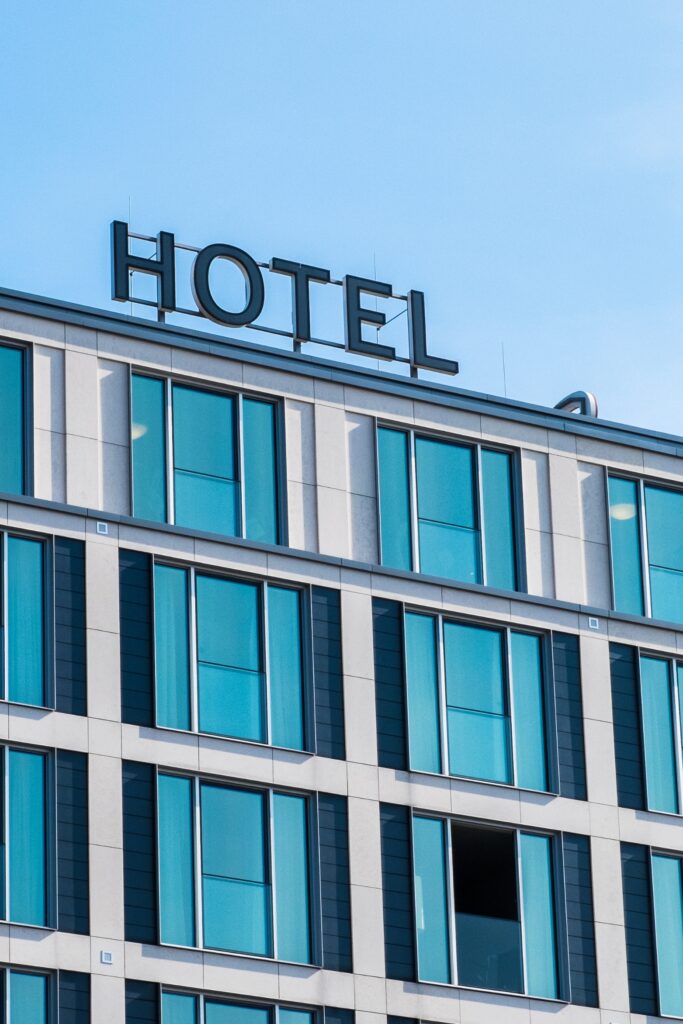
Knowing that: is it sustainable to have hotels and resorts sat empty for six months of the year?
To release the emissions to build these properties, and then only use them half the year? Is that responsible? Is that sustainable?
Absolutely not. That, frankly, is abhorrent.
And what our industry has done over many years is they’ve said, “The hotels are full during peak season. So we need to build more hotels.”
No! You’ve got stacks of hotels already. Fill them during the other six months of the year. But instead, over a period of time, the travel industry got complacent.
I think in the interview you did with TTG Media, you compared it to having 12 cans of beans, and trying to fill six of them until they’re overflowing, while leaving the other six empty.
Yes, I just find it weird that we build these hotels and have them pretty much sat empty for six months of the year, and then we have developers saying “We want to build more hotels in these destinations.”
It just doesn’t make any sense.
But so many tourism destinations allow it. If I were in their place, I’d say “We currently have so many rooms empty for so many months. Until we fill those, why would we allocate any more of our land to build more properties?”
And the advantage for the destination is you don’t need to invest anything. You’ve already got the infrastructure. You just need to market it differently.
11. SHIFTING THE NARRATIVE: HOW TO SHOWCASE THE APPEAL OF THE LOW SEASON
So low season travel is a marketing challenge for the industry, and it takes creativity and ingenuity to market it differently.
One example I give to illustrate this is: I was in Croatia a couple of years ago at a speaking gig, and I did a talk about low season travel. A lady from the tourist board in the south of Croatia said to me, “But tourists only come here for the sun and the beach. Why would they come in the winter?”
I asked her, “Tell me this honestly. How have you promoted your region over the past 20 years? What’s been your main messaging and imagery?”
She kind of smiled, and said, “Sun and beaches.”
I said, “So you asked people to come for your beautiful sun and beaches, and they came. Well done! But now you need to ask for something different.”
And this destination has an abundance of cultural heritage that’s on a par with anything outside of Rome.
I said, “Maybe you should start to tell that story a little bit more. Because there are huge numbers of travelers that are interested in cultural heritage. Maybe you can convince those people to come in the winter, when the sun is still shining, it’s a little bit cooler, but all of the cultural heritage is still there.
That’s the beauty of cultural heritage tourism. You don’t need the perfect climate to appreciate culture and heritage. It’s there all year round.

12. ENSURING YOUR TRAVEL DOLLARS BENEFIT LOCAL COMMUNITIES
So let’s say someone is convinced now of the benefits of traveling during the low season. How can they make sure they’re supporting local businesses when there are fewer tourists around?
This is a question which is really linked with the whole concept of economic leakage: how much of your money is remaining in the local destination, and how much of it is being siphoned off to various company headquarters in other countries.
And it’s nuanced, because those global companies are still employing people in the local destination. But generally, there is a lot of economic leakage in tourism.
Something I’ve been outspoken about is cruises. If I book a cruise with a major cruise line around the Caribbean or the Mediterranean, I pay my money to the cruise line. I eat all of my meals on the cruise ship, because it’s all included. I drink all my drinks on the cruise ship. I pay my tips on the cruise ship. If I want to book an excursion, I do it through the cruise line.
So the vast majority of the money remains with that cruise line. The destinations that are a port of call make next to nothing. They might make money on trinkets.
And I I feel like that’s wrong.
So you want to try and seek out and shop where you figure that the money is going to stay local. That takes a little bit more research. But it’s worth doing.
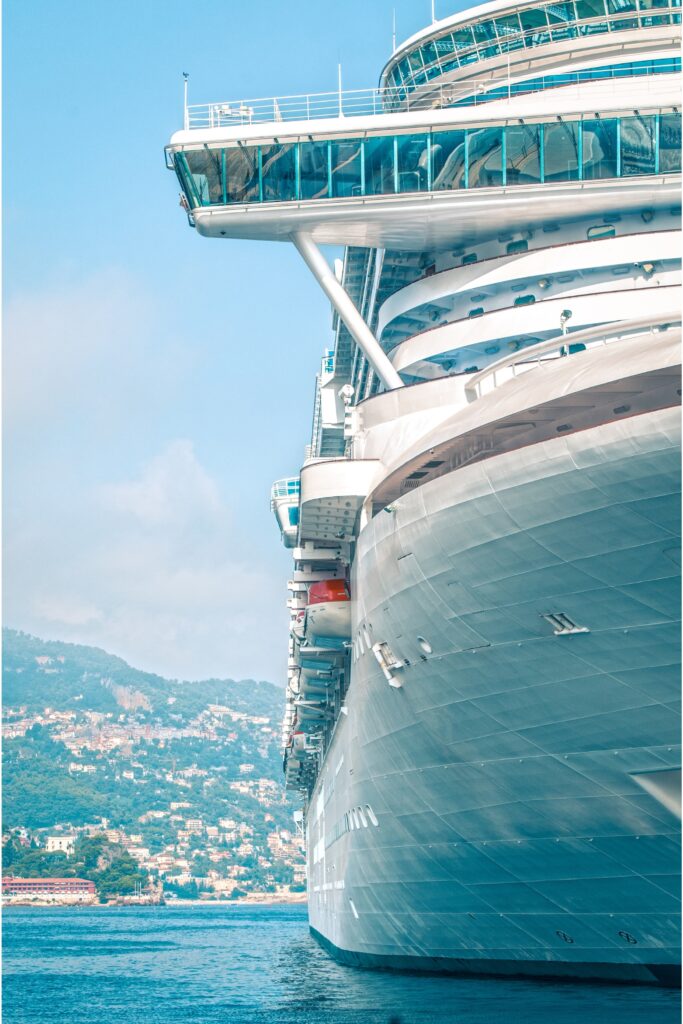
13. ALIGNING LOW SEASON TRAVEL WITH RESPONSIBLE TOURISM PRINCIPLES
Is it possible to practice low season travel that is not aligned with responsible tourism? If so, how can we avoid that?
That’s a really good question. Is it possible to be a bad low season traveler? I guess it is. I think it depends on your purpose.
Bad tourism is bad tourism, whatever time of the year it is. If you’re going to Prague in February, and you’re just going in order to drink and behave like an idiot and you’ve got no interest in Prague, then, yeah, that’s bad low season tourism.
Generally, whatever time of the year you’re traveling, try to be considerate. Try to be mindful that you’re in another country and another culture. Take an interest in that culture and try to learn from it. And if you do that, you’ll come back with something more than a suntan.
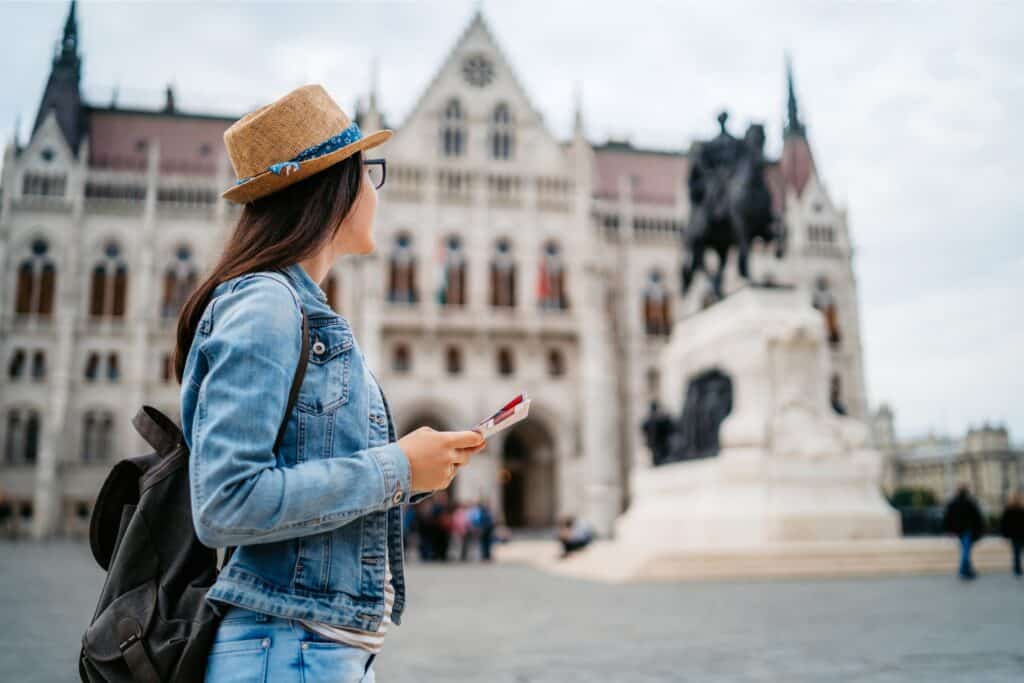
I think the bottom line is about appreciating that it’s not your home. You are a guest. And hopefully, you want to be a considerate guest.
14. EXAMPLES OF DESTINATIONS EMBRACING THE LOW SEASON
Do you have any examples of one or two destinations that have benefited from switching from a focus on peak season to promoting an increase in low season tourism?
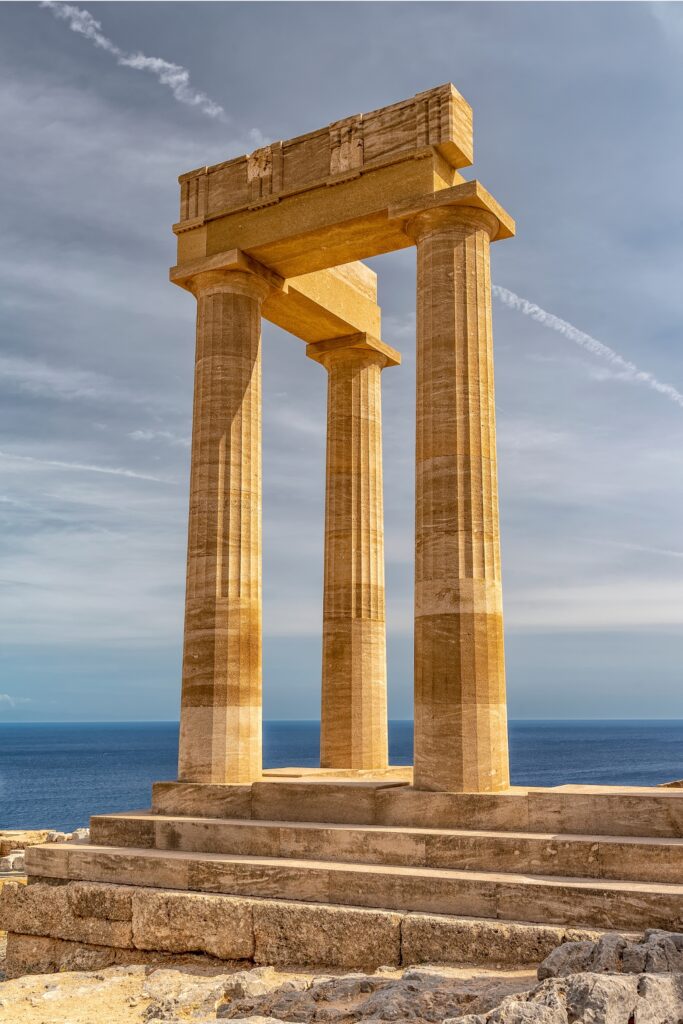
I spoke before about Rhodes. Rhodes has made real efforts on this matter, because they recognize that they can’t keep cramming people into the summer. It’s getting too busy.
And they’re learning as they go that they need to choose different messaging.
A lot of people go to Rhodes in the summer for sunshine and beaches. But they need to convey a different message to get people to visit in the winter. Because it’s still sunny that time of year, but you’re not going to be sitting out on the beach on a Sunday.
However, the cultural heritage in Rhodes is just breathtaking. And the temperature is still pleasant.
You’ve got destinations like Cyprus where, again, traditionally, they’ve had a peak season. It’s true they’ve always been able to attract a certain number of visitors in the winter, too: for example, people seeking winter sun.
But now they’re looking at promoting cycling tourism. Cyprus has a great climate for cycling; they’ve got great roads, great scenery. And cycling is a large market. People love to go off and cycle in the winter in different places.
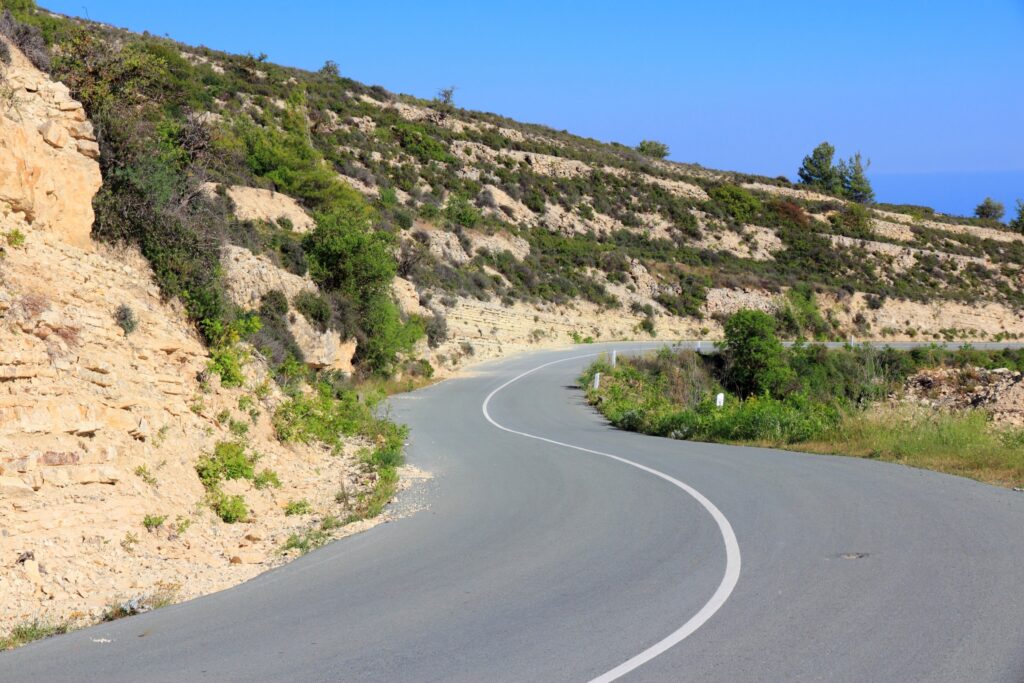
And just like with Rhodes, Cyprus has a richness of cultural heritage that would be really attractive to a lot of travelers if they knew about it.
I tend to emphasize destinations’ cultural heritage because a) it’s there all year round, and b) it’s what makes a place unique.
15. IDENTITY OVER GEOGRAPHY: HOW DESTINATIONS CAN SHINE IN THE LOW SEASON
If you look at the Caribbean Islands, which, as I said before, are spread out over an area the size of Western Europe: what differentiates those islands?
They all have lovely beaches. They’ve all got palm trees, they’ve all got lovely clear waters.
What differentiates them is the culture and the heritage. Because, let me tell you, Cuba is very different from Barbados, which is very different from Trinidad and Tobago.
But how many of us know what those differences are?
We need destinations to help us understand their uniqueness. It’s wrapped up in the essence of who they are: their traditions, their beliefs, their food, their music, their dance. They have so much more to offer than just their geography.
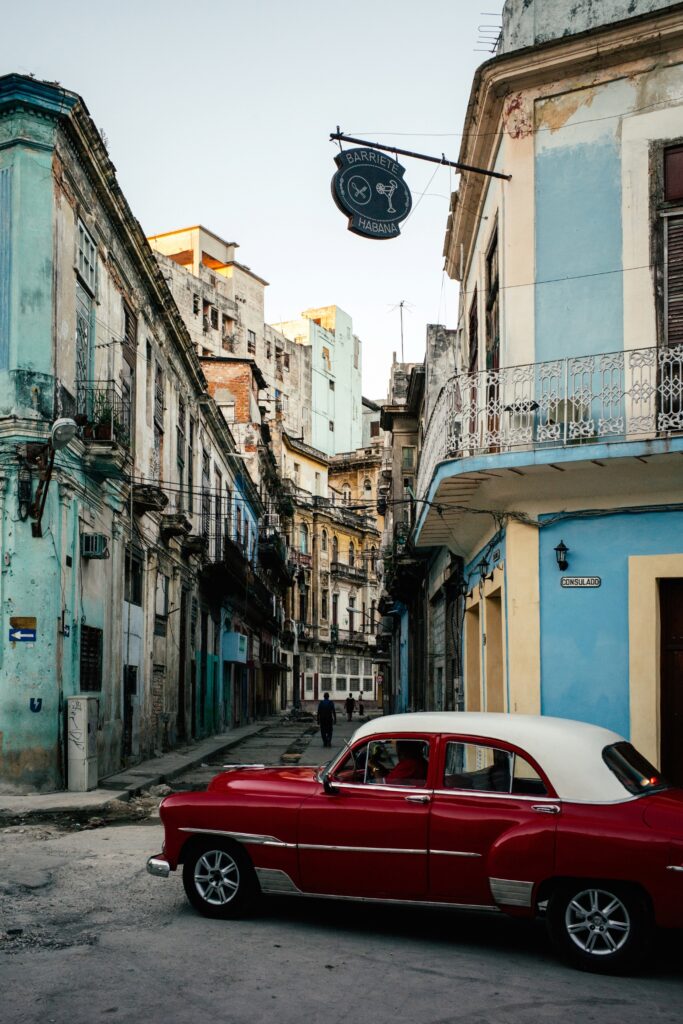
Another good example is: I did some work with Tahiti tourism in the South Pacific. They said, “we want you to come during the low season months.”
When we got there, I said, “I don’t even want to see a beach. Because to get from the UK to Tahiti, I’ve flown over some of the most amazing beaches in the world: the Maldives, Sri Lanka, The Gold Coast.
“So I’m not interested in beaches. I want to know what makes Tahiti unique beyond the beaches.”
And the depth and breadth of Tahiti’s cultural heritage absolutely blew me away.
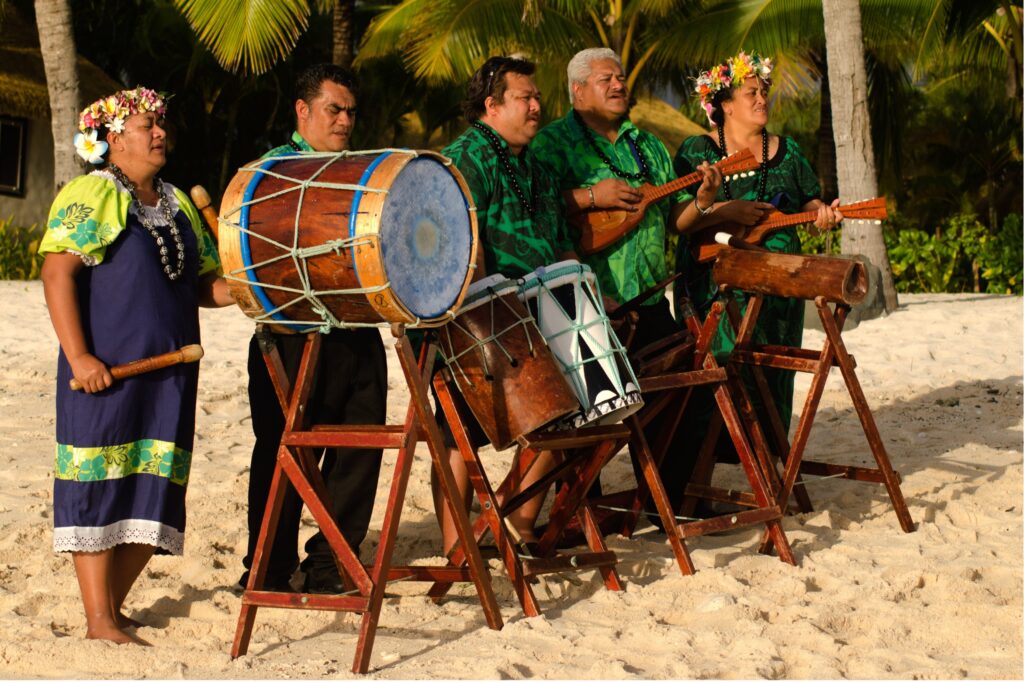
I thought, “That’s why someone would travel halfway around the world. Because what this place has got, in terms of culture, is truly remarkable and special.” And I felt connected with it when I was there.
Don’t get me wrong: the beaches are beautiful. But I wouldn’t travel that far for a beach. To me, it was that rich cultural heritage that made it worth the trip.
Click here to read part two of our interview with Ged, where we discuss:
The inspiration behind launching Low Season Traveller
- How best to use the website and resources in planning your low season holiday
- How attitudes towards low season travel have changed since the company was founded
and much more.
About Ged Brown:

Ged Brown is the founder and CEO of Low Season Traveller, an organization dedicated to promoting travel outside of the peak seasons.
With a deep belief in the benefits of quieter, less crowded travel experiences, Ged’s mission is to help people discover the advantages of visiting destinations at a time when most other travelers aren’t.
Through his work, he highlights the importance of combating overtourism, while encouraging travelers to embrace the unique charm of destinations during the low season.
Ged has over 30 years of experience in the travel industry, and has held senior roles at prominent companies like Thomas Cook, Travel Weekly, MyTravel, TUI and Kuoni.
He is a passionate advocate for sustainable tourism and serves on the management board of The World Tourism Association for Culture and Heritage. Ged frequently presents at industry events and writes about sustainable tourism practices, aiming to ensure that travel remains accessible and beneficial for future generations.


